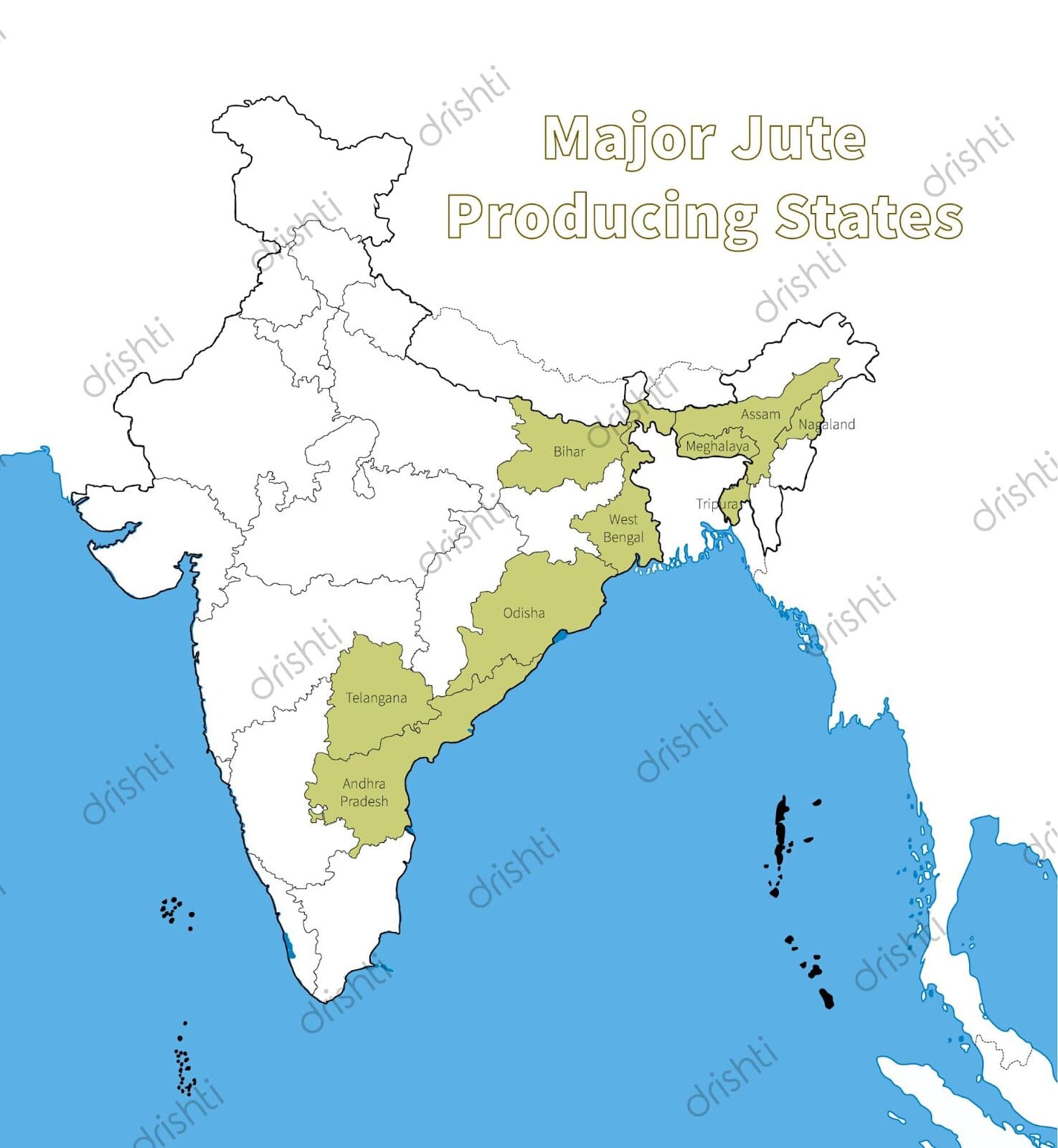Mandatory Jute Bag Packaging | 30 Oct 2020
Why in News
Recently, the Cabinet Committee on Economic Affairs, chaired by the Prime Minister, has approved that 100% of the foodgrains and 20% of the sugar shall be mandatorily packed in jute bags.
- The decision will give an impetus to the diversification of the jute industry.
Key Points
- Extended Norms:
- The decision mandates that initially 10% of the orders of jute bags for packing food grains would be placed through a reverse auction on the GeM portal, which will gradually help in a regime of price discovery.
- In a reverse auction, the sellers compete to obtain business from the buyer and prices will typically decrease as the sellers underbid each other.
- Price discovery is the process of determining the price of an asset in the marketplace through the interactions of buyers and sellers.
- The decision mandates that initially 10% of the orders of jute bags for packing food grains would be placed through a reverse auction on the GeM portal, which will gradually help in a regime of price discovery.
- Statutory Provision:
- Government has expanded the scope of mandatory packaging norms under the Jute Packaging Materials (Compulsory Use in Packing Commodities) Act, 1987, also known as the JPM Act.
- Under it, the Government is required to consider and provide for the compulsory use of jute packaging material in the supply and distribution of certain commodities.
- Government has expanded the scope of mandatory packaging norms under the Jute Packaging Materials (Compulsory Use in Packing Commodities) Act, 1987, also known as the JPM Act.
- Government Dependent Sector:
- The jute industry is predominantly dependent on the Government sector which purchases jute bags of value of more than Rs. 7,500 crore every year for packing foodgrains.
- This is done in order to sustain the core demand for the jute sector and to support the livelihood of the workers and farmers dependent on the sector.
- Nearly 3.7 lakh workers and several lakh farm families are dependent for their livelihood on the jute sectors so the government has been making concerted efforts for the development of the jute sector by:
- Increasing the quality and productivity of raw jute.
- Diversifying the jute sector.
- Boosting and sustaining demand for jute products.
- The jute industry is predominantly dependent on the Government sector which purchases jute bags of value of more than Rs. 7,500 crore every year for packing foodgrains.
- Benefits:
- The move will benefit farmers and workers located in the Eastern and North-Eastern regions of the country particularly in the states of West Bengal, Bihar, Odisha, Assam, Andhra Pradesh, Meghalaya and Tripura.
- The reservation norms in the present proposal would further the interest of domestic production of raw jute and jute packaging material in India, thereby, making India self-reliant in consonance with Aatmanirbhar Bharat.
Government Initiatives for Promoting Jute Industry
- Jute-Improved Cultivation and Advanced Retting Exercise:
- Jute ICARE aims to improve the productivity and quality of raw jute.
- Under it, the Government is disseminating improved agronomic practices such as line sowing using seed drills, distribution of quality certified seeds, etc.
- Jute SMART:
- It is an e-govt initiative which was launched in December 2016 to promote transparency in the jute sector.
- It provides an integrated platform for procurement of sacking by Government agencies.
- Definitive Anti-Dumping Duty:
- It has been imposed on import of jute goods from Bangladesh and Nepal with effect from 5th January 2017 to protect the domestic sector.
- Incentive Scheme for Acquisition of Plants and Machinery:
- Launched in 2013, it aims to facilitate modernisation in existing and new jute mills and up- gradation of technology in existing jute mills.
- Collaboration between the National Jute Board and the National Institute of Design:
- It aims to support the diversification of the jute sector through a Jute Design Cell.
- National Jute Board under the Ministry of Textiles, acts as the apex body for the promotion of the products in India and abroad.
- Jute is included in the Minimum Support Price (MSP) regime of the country.
Jute
- Temperature: Between 25-35°C.
- Rainfall: Around 150-250 cm.
- Soil Type: Well-drained alluvial soil.
- Top Jute Producing States: West Bengal > Bihar > Assam > Andhra Pradesh > Odisha.
- It is mainly concentrated in eastern India because of the rich alluvial soil of Ganga-Brahmaputra delta.
- The world's largest jute producing countries are India, Bangladesh, China and Thailand.
- India is the world's largest producer of raw jute and jute goods, contributing to over 50% and 40% respectively of global production.
- It is known as the golden fibre because it is one of the longest and most used natural fibre for various textile applications.
- It is used in making gunny bags, mats, ropes, yarn, carpets and other artefacts.
- Due to its high cost, it is losing market to synthetic fibres and packing materials, particularly nylon.

